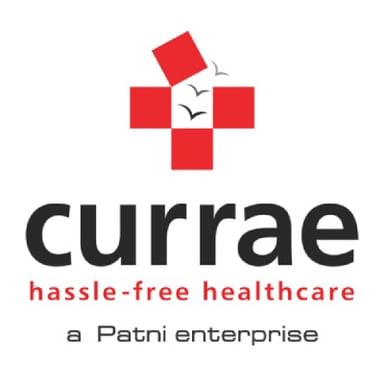Get the App
For Doctors
Login/Sign-up
Currae Specialty Hospital ( On Call)
Multi-speciality Hospital (Pediatrician, Dermatologist & more)
Rosa Vista, Building Number 3, Unit Number 4, 5 & 6, Waghbil Naka, Ghodbunder Road, Landmark: Opposite Suraj Water Park
47 Doctors
₹ 500 - ₹ 2500 at hospital
See all timings
About Hospital
We will always attempt to answer your questions thoroughly, so that you never have to worry needlessly, and we will explain complicated things clearly and simply....read more
Hospital Timing
Mon
Tue
Wed
Thu
Fri
Sat
Sun
08:00 AM - 11:00 PM
Hospital Location
Hospital Images
Videos
Doctors in Currae Specialty Hospital ( On Call)
Get Help
Services
Feed
Doctors in Currae Specialty Hospital ( On Call)
Dr. Shailendra Patil
Orthopedic Doctor23 Years Exp.
MBBS, Diploma In Orthopaedics, DNB - Orthopedics, Fellowship In Joint Replacement & Arthroscopy
₹ 1,000 at clinic
₹ 350 online
Dr. Hemant Patil
General Surgeon24 Years Exp.
MBBS, DNB - General Surgery, MNAMS - General Surgery
₹ 1,000 at clinic
Dr. Hitendra Patil
Oncologist22 Years Exp.
MBBS, DNB ( General Surgery ), DNB - Surgical Oncology, MNAMS (Membership of the National Academy) (General Surgery) , MRCS (Gen Surg)
₹ 1,000 at clinic
Dr. Kapil Mohan
Orthopedic Doctor18 Years Exp.
MS - Orthopaedics, DNB - Orthopedics, Clinical Fellowship in Adult & Paediatric Spine Surgery
₹ 1,000 at clinic
View All
Specialities
Network Hospital
Currae Speciality Hospital (On Call)
Ground Floor, Highstreet Cum Highland Corporate Center, Kapurbavadi Junction,, Landmark: Near Big Bazaar
18 Doctors
18 speciality
Patient Review Highlights
Submit Feedback
Submit a review for Currae Specialty Hospital ( On Call)
Your feedback matters!



